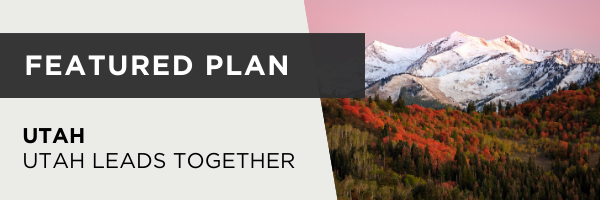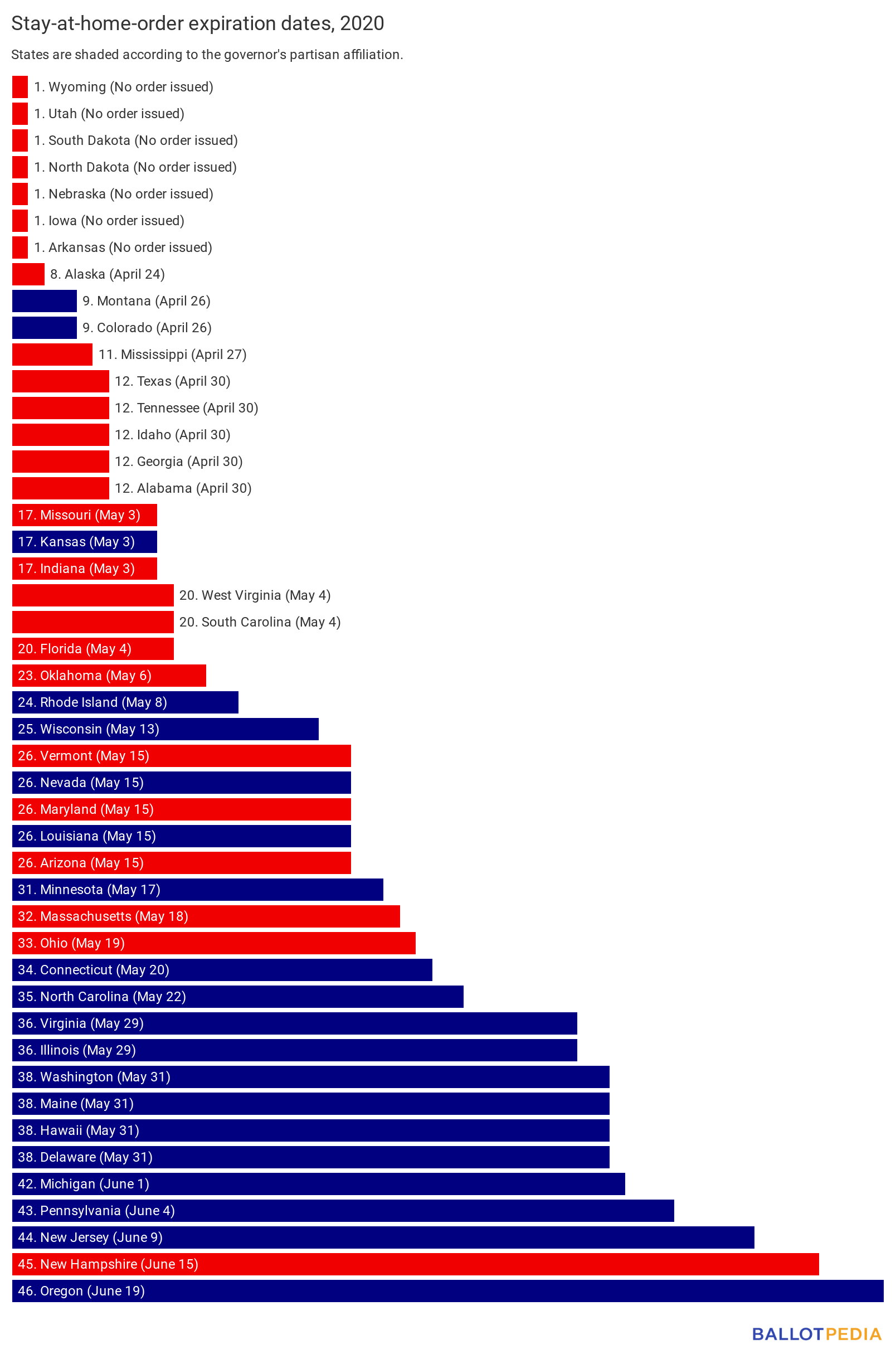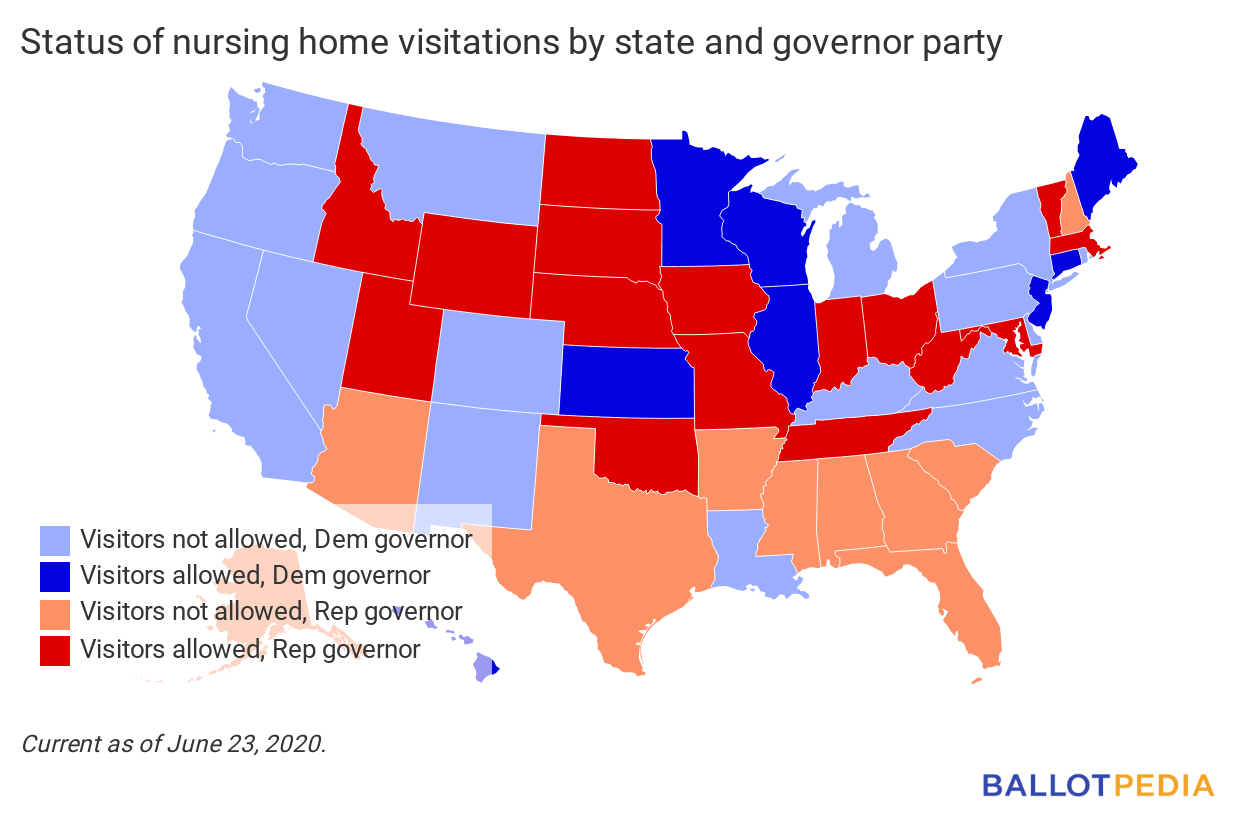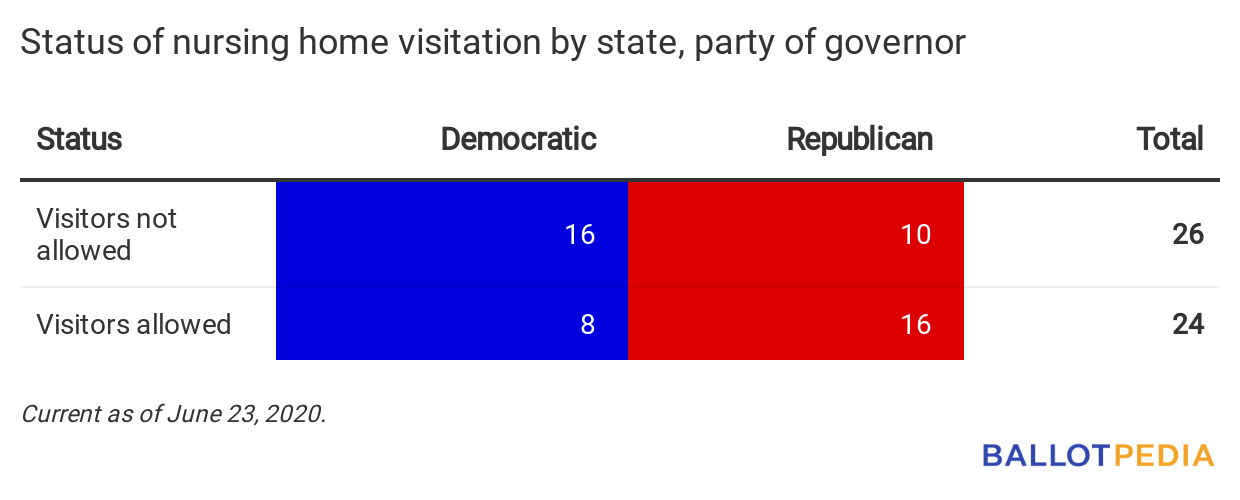Each day, we:
Want to know what happened yesterday? Click here. The next two daysWhat is reopening in the next two days? Which stay-at-home orders will expire? June 24
Since our last editionWhat is open in each state? For a continually updated article on reopening status in all 50 states, click here. For our last edition, click here.
Update on stay-at-home ordersForty-three states issued orders directing residents to stay home except for essential activities and the closure or curtailment of businesses each state deemed nonessential. Seven states did not. As of June 23, stay-at-home orders have ended in 39 states. Nineteen of those states have Republican governors and 20 have Democratic governors (including Wisconsin, where the state Supreme Court invalidated the stay-at-home order). The four states with active stay-at-home orders have Democratic governors. They are (with expiration date):
Here’s which stay-at-home orders have expired.
Tracking industries: Nursing home visitationAll 50 states are reopening in some way. Here, we give the status of one industry or activity across the states. Today’s question: in which states may you visit someone in a nursing home? This does not include end-of-life or other emergency-related visits. Visits limited to family members only, or that are only allowed outdoors, are counted as “visitors allowed” in the chart and map below.
|

This is an in-depth summary of one of the latest reopening plans. Is there a plan you’d like us to feature? Reply to this email and let us know. Click a state below to read a previous Featured Plan.
On March 24, Gov. Gary Herbert (R) released the first version of “Utah Leads Together.” The first phase of the plan called for aggressive social distancing to reduce the person-to-person transmission rate to 1 to 1 within 30 days. On March 27, Herbert issued a “Stay Safe, Stay Home” directive requesting that all Utahns practice social distancing and stay home whenever possible. The directive was not a stay-at-home or shelter-in-place order. Herbert also issued several statewide directives and orders that placed restrictions on individuals and businesses. On April 17, Herbert released “Utah Leads Together 2.0,” which clarified the stages of reopening first laid out in version 1.0. The plan instituted a color-coded health guidance system to move the state through different reopening phases. Herbert released “Utah Leads Together 3.0” on May 20, focused on the state’s high-risk populations and multi-cultural communities. He released “Utah Leads Together 4.0” on June 17, which provides a plan for economic recovery over the next 100, 250, and 500 days. Context
Plan detailsWhen it was released on March 24, “Utah Leads Together 1.0” had three phases of recovery—an urgent phase, a stabilization phase, and a recovery phase. The urgent phase was estimated to last for 8-12 weeks. The stabilization phase was estimated to last between 10-14 weeks. The recovery phase was estimated to last 8-10 weeks. “Utah Leads Together 2.0,” released on April 17, introduced a color-coded reopening. Each phase’s color corresponds to a level of risk. Each phase also gradually eased restrictions. The guidance system started at red (high risk), and then moved to orange (moderate risk), yellow (low risk), and ended at green (new normal). As of June 23, only Salt Lake City remains in the orange phase of reopening. Nineteen counties have advanced to the yellow phase, and 10 counties have advanced to the green phase. Red phase On April 17, all of Utah was in the red phase (high risk), the most restrictive phase of the reopening plan. Gatherings were limited to 10 people or less, and out-of-state travelers were required to fill out a travel declaration upon entering the state. High-risk individuals, which the state defines as people over the age 65, people living in long-term care facilities, and people with certain underlying medical conditions, were subject to different guidelines developed by the Utah Department of Health through all phases of reopening. On April 17, most Utah state parks reopened. On April 21, Herbert issued a public health order allowing some elective medical procedures to resume. Orange phase On April 29, Herbert signed an order moving Utah from the red phase to the orange phase of reopening effective May 1, instituting the first broad change in the restrictions imposed in March. The move to orange eased a number of restrictions on businesses and individuals. The following businesses were allowed to reopen with restrictions:
Yellow phase On May 16, Herbert issued an order moving much of Utah to the yellow phase, further easing restrictions. Some cities and counties with high rates of coronavirus cases were required to remain in the orange phase, including Salt Lake City. Under the yellow phase, all businesses were allowed to reopen if they followed industry-specific guidelines, and gatherings of up to 50 people were permitted. Herbert wrote on Twitter that, under the yellow phase, “there are no economic activities that are categorically prohibited if common-sense precautions are in place.” Although the guidelines under the yellow phase varied by industry, they generally required social distancing when feasible, symptom-checking employees, and face coverings for employees. On May 21, Herbert signed an order moving Summit and Wasatch countries from orange to yellow. On May 22, Herbert moved the municipalities of Bluff and Mexican Hat from yellow to orange, reflecting a growing health risk in the surrounding area. On May 29, more counties were moved into the yellow phase. Green phase On June 12, Kane County became the first area in Utah to advance to the green phase. According to the overview of guidelines for the general public:
On June 17, Herbert released “Utah Leads Together 4.0,” which builds on the previous three plans and provides a blueprint for economic recovery over the next 100, 250, and 500 days. The plan calls for Utahns to do three things:
According to the plan, Utah remains in the stabilization phase of the three-phase recovery plan first outlined in “Utah Leads 1.0.” However, the plan says Utah is nearing the recovery phase, which is a return to stability and positive growth. In the 100-day horizon, the plan focuses on returning furloughed or inactive employees to work, connecting unemployed Utahs with jobs, and using CARES Act funding and other sources of stimulus to jumpstart economic recovery. In the 250-day horizon, the plan focuses on investment and productivity, including infrastructure and construction-ready projects. The 500-day horizon looks ahead at where the world economy is going and investigates steps necessary to ensure prosperity for Utah over the next 5,000 days. Additional activityIn this section, we feature examples of activities by other federal, state, and local governments and influencers relevant to recovering from the pandemic.
|
Documenting America’s Path to Recovery: June 23, 2020
By




